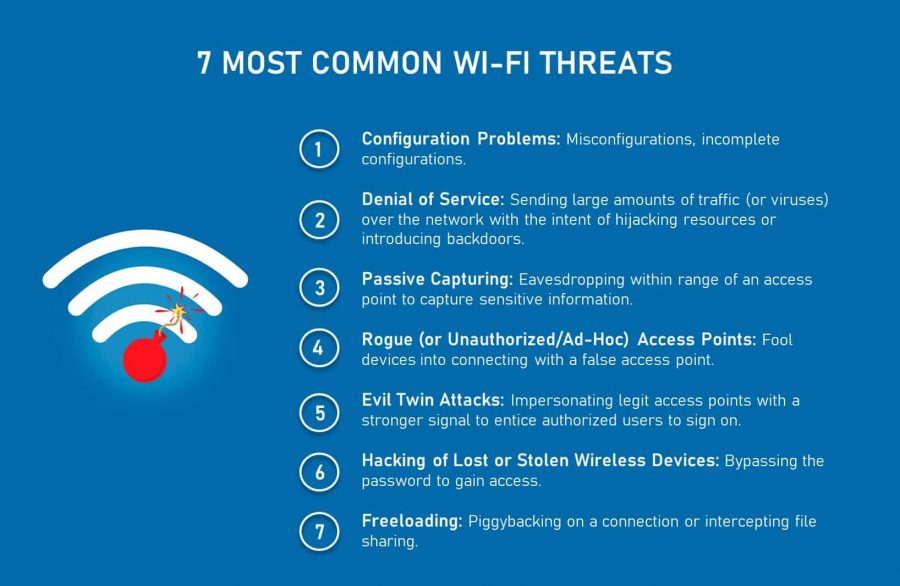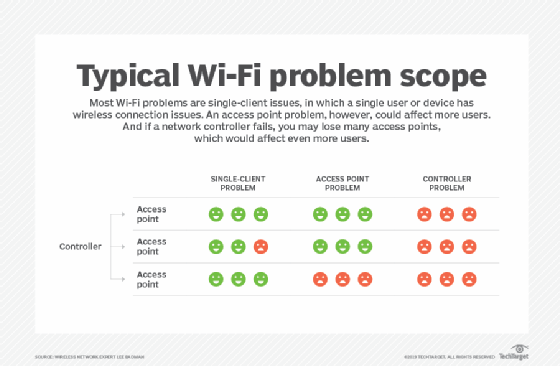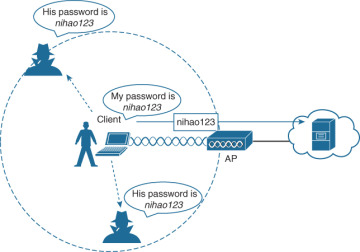Wireless networks have become an essential part of our daily lives, providing us with convenient access to the internet and enabling us to stay connected with the world around us. However, with the rise in the use of wireless networks, there has also been an increase in the number of security threats and attacks. Wireless network attacks can have devastating consequences, from stealing sensitive data to taking control of a network. Therefore, it is crucial to understand how to prevent wireless network attacks to protect yourself and your devices.
Preventing wireless network attacks requires a combination of technical and non-technical measures. In this article, we will explore some of the most effective ways to secure your wireless network and keep your data safe from prying eyes. From updating your firmware to changing your default login credentials, we will cover everything you need to know to protect your wireless network from potential attacks. So, if you want to keep your wireless network secure and prevent unauthorized access, keep reading to learn more about how to prevent wireless network attacks.
To prevent wireless network attacks, you should:
- Update your wireless router’s firmware regularly.
- Change your network’s SSID and password, and hide the SSID.
- Set up a strong encryption protocol like WPA2-AES.
- Enable a firewall and configure it to restrict incoming and outgoing traffic.
- Disable remote access and remote management.
- Disable Universal Plug and Play.
- Use MAC address filtering to restrict access to your network.
- Limit the broadcasting range of your wireless network.

Introduction
Wireless networks are becoming increasingly popular as they are convenient and easy to use. However, they can also be vulnerable to cyber attacks. In this article, we will discuss how to prevent wireless network attacks. We will look at the different types of attacks, how to protect your network, and the importance of staying up-to-date with security best practices.
How to Prevent Wireless Network Attacks
Understand Different Types of Attacks
The first step to protecting your wireless network is to understand the different types of attacks that can occur. Common types of attacks include man-in-the-middle attacks, denial-of-service attacks, and wireless eavesdropping. Man-in-the-middle attacks occur when an attacker intercepts communications between two parties. Denial-of-service attacks involve flooding a network with traffic to overwhelm it. Wireless eavesdropping involves using a device to intercept wireless signals.
Secure Your Network
The next step is to secure your network against these types of attacks. This can be done by implementing strong passwords and encryption protocols. It is also important to use up-to-date security software and firewalls. Additionally, it is important to limit access to the network by only allowing authorized users. This can be done by implementing user authentication and access control.
Stay Up-to-Date with Security Best Practices
Finally, it is important to stay up-to-date with security best practices. This means regularly patching and updating software, as well as monitoring the network for any suspicious activity. Additionally, it is important to educate users on the importance of cybersecurity and how to recognize potential threats.
Use Network Monitoring Tools
Network monitoring tools can also be used to help detect and prevent attacks. These tools can monitor network traffic for suspicious activity and alert administrators of any potential threats. Additionally, they can be used to identify any vulnerable systems and take action to secure them.
Implement Security Policies
It is also important to implement security policies to ensure the safety of your network. These policies should outline the steps that need to be taken to protect the network and the actions to be taken in the event of a breach. Additionally, these policies should be regularly reviewed to ensure they are up-to-date.
Implement Network Segmentation
Network segmentation is also important for preventing attacks. This involves dividing the network into smaller segments, which can limit the damage caused by an attack. Additionally, network segmentation can help to isolate any infected systems from the rest of the network.
Monitor for Unauthorized Access
Finally, it is important to monitor for any unauthorized access to the network. This can be done by using logging and audit tools to detect any suspicious activity. Additionally, it is important to ensure that users are only accessing the network from authorized devices and that they are using strong passwords.
Conclusion
Wireless networks can be vulnerable to cyber attacks, but there are steps that can be taken to protect them. It is important to understand the different types of attacks, secure the network, and stay up-to-date with security best practices. Additionally, network monitoring tools, security policies, and network segmentation can help to prevent attacks. Finally, it is important to monitor for any unauthorized access to the network. By following these steps, organizations can ensure the security of their wireless networks.
Frequently Asked Questions
Here you can find answers to questions about how to prevent wireless network attacks.
What are the best ways to prevent wireless network attacks?
The best way to prevent wireless network attacks is to implement a combination of security measures. These measures should include both technical and administrative solutions. On the technical side, you should use strong encryption and authentication protocols such as WPA2, use a firewall to block malicious traffic, and use strong passwords to protect access to the network. On the administrative side, you should regularly update your security software, review and monitor your network traffic, and create a secure network policy that outlines acceptable use of the network.
How can I secure my wireless network?
To secure your wireless network, you should always use a strong encryption protocol like WPA2. You should also use a firewall to block malicious traffic and use strong passwords to protect access to the network. Additionally, you should regularly update your security software and review and monitor your network traffic to ensure that there are no unauthorized access attempts. Finally, you should create a secure network policy that outlines acceptable use of the network as well as any security measures that you have implemented.
What is WPA2 and why is it important?
WPA2 is a security protocol for wireless networks that provides encryption for data transmitted over the network. It is important because it helps to protect the data that is being transmitted over the network from being accessed by unauthorized individuals. WPA2 also provides an authentication process that helps to ensure that only authorized users can access the network.
What are the risks of using an unsecured wireless network?
The risks of using an unsecured wireless network are numerous. Unsecured networks can be vulnerable to malicious attacks, which can lead to data being stolen or systems being compromised. Additionally, unsecured networks can be used as a means to access other networks, which can lead to further security breaches. Finally, unsecured networks can be used to facilitate illegal activities, such as hacking or the distribution of viruses and malware.
What is a firewall and why is it important?
A firewall is a network security system that monitors and controls incoming and outgoing network traffic. It is important because it helps to protect the network from malicious traffic, such as viruses or hackers. Firewalls can also be used to control access to the network, as well as to filter out certain types of traffic. Additionally, firewalls can be used to detect and alert administrators to suspicious activity, which can help to prevent more serious security breaches.
In conclusion, protecting your wireless network against attacks is crucial in today’s digital age. With the increasing reliance on the internet for communication, work, and entertainment, the security of our digital information has become a top priority. By following the steps outlined above, you can significantly reduce the risk of unauthorized access to your wireless network, and safeguard your sensitive data from cybercriminals.
Remember, prevention is always better than cure when it comes to cybersecurity. Take the necessary precautions to secure your wireless network, and stay informed about the latest threats and vulnerabilities. By staying vigilant and proactive, you can keep your digital life safe and secure, and enjoy the benefits of a fast and reliable wireless connection without worrying about the risks of cyber attacks.



